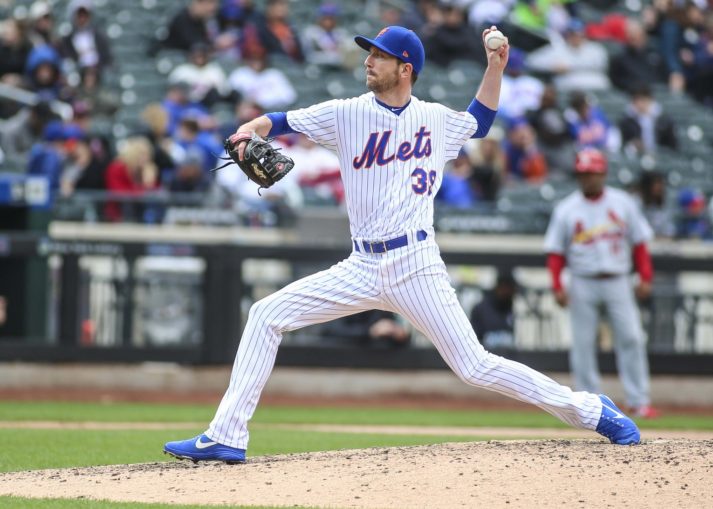
Though this last New York Mets homestand didn’t result in any wins, two key pieces in the Mets’ bullpen who weren’t all that sharp to start the season have begun to find their strides.
Jerry Blevins and AJ Ramos were expected to be two solid mainstays on the mound late in games for the Mets this season. While neither has been all that bad over the team’s first thirty-odd games, there have been more scary times with them pitching than anybody involved had any expectations of.
Ramos, 31, only allowed one hit over six innings from Opening Day until April 14. His .056 batting average against over that time was outstanding, but he issued four walks while racking up just three strikeouts.
From April 15 to April 21, Ramos hit a rough patch that was unlike any stretch he’s experienced since being traded to the Mets last year. In three innings of work over five appearances, Ramos walked five batters and allowed a hit while giving up four earned runs.
His control issues and penchant for putting runners on base this season had finally caught up with him. For the first three weeks of the season, Ramos was getting himself into some trouble with walks, but he was able to find his own way out of those jams. It seemed that his good luck had run out.
Since that uninspiring run, AJ Ramos has been back to himself, dropping all of his pitches in for strikes and keeping a tight handle on his pitch control/command.
From April 26 through yesterday’s loss to Colorado, Ramos has pitched three innings in five appearances, walking none, striking out five and hasn’t allowed a run. It appears as if Ramos has worked through his temporary control issues and is back to being a stalwart in the Mets’ relief corps.

Jerry Blevins has been one of the most effective lefty-on-lefty relievers in all of baseball over the last few seasons. Last season, versus lefties, Blevins allowed just two earned runs over 34 innings, striking out 48 batters and walking just six.
In 2016, it was more of the same for the lanky left-hander, owning a 2.94 earned-run average over 42 innings pitched. He actually had better success against righties (.182 batting average against) than lefties (.255) in 2016.
Over the last two seasons, Blevins has changed his pitching arsenal a bit. In 2016 he threw his fastball 62.6% of the time, compared to using his curveball 31.1% of the time and his changeup intermittently (6.3%).
In 2017, Blevins threw his curveball for over half of the pitches he threw (50.1%), while using his fastball just slightly less (49.3%). His swooping deuce that starts at a left-handed batters’ head and drops into the strike zone around 15 feet from the plate has likely been a big key to his success.
This season, Jerry Blevins has switched up his style yet again. He still primarily throws his fastball (49.3%) and curveball (41.2%), but has begun to mix in his changeup a bit more (9.6%).
The 34-year-old was having some location troubles of his own to start the Mets’ season, just like Ramos. And just like Ramos, he was getting out of these self-induced jams.
From the time he made his first appearance of the year on April 1 until April 15, Blevins pitched 2.2 innings allowing one hit, no runs, but he walked three batters. That lack of command is uncharacteristic for Blevins, who has a career-mark of 3.41 walks per nine innings.
Again, just like AJ Ramos, Jerry Blevins’ good fortune changed and the runners that he had stranded on-base over the first few weeks of the year were now coming around to score.
In two appearances from April 16 to April 19, Blevins gave up four hits allowing five earned runs to score. The seven batters he faced during that time hit a combined .667 against him with a .833 slugging percentage.
Since that downturn in effectiveness, Blevins has been back to his grind. In 4.1 innings of work since April 21 (six appearances), he’s held batters to a .133 average and a .200 slugging percentage with three punchouts and just one bases-on-balls.
The quick and efficient turnarounds that Jerry Blevins and AJ Ramos have exhibited gives hope that once the New York Mets start scoring runs again, the once-shaky foundation of this team’s relief corps has been refortified and rejuvenated.















